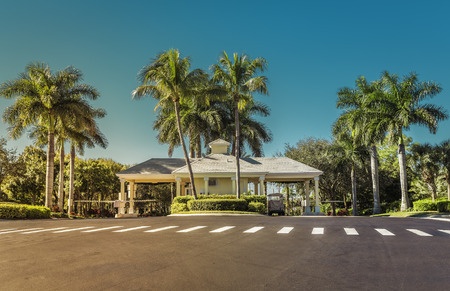HOA and Condominium Associations Can Be Liable for Accidents in Their Communities
March 28, 2016 | Category: Automobile Accidents, Motorcycle Accidents, Truck Accidents, Wrongful Death | Share
 When travelling around Collier, Leeand Charlotte counties, it is easy to see that we have a large number of gated communities and communities with homeowner and condominium owner associations. In living in these communities, residents expect they are safe places to live and to entertain. However, vehicles using the roadways within these communities can become involved in collisions, and even collisions with injuries and fatalities. While the drivers may be at fault, can the associations also be liable?
When travelling around Collier, Leeand Charlotte counties, it is easy to see that we have a large number of gated communities and communities with homeowner and condominium owner associations. In living in these communities, residents expect they are safe places to live and to entertain. However, vehicles using the roadways within these communities can become involved in collisions, and even collisions with injuries and fatalities. While the drivers may be at fault, can the associations also be liable?
In a 2013 Florida trial, the jury thought so. A woman, as she drove out of the Villas on the Green community driveway to enter U.S. Highway 1 in Palm Beach, FL, hit a 9-year-old boy who was riding his bicycle, reported the Sun-Sentinal. The boy succumbed to his injuries. The parents of the boy were awarded $12 million in the jury trial. The management company, MMI of Palm Beach was found to be 60 percent at fault, Villas on the Green Condominium association was found to be 30 percent at fault, and the driver was found to be 10 percent at fault. The court ruled that both the property management company and the HOA were negligent in their failures to monitor and maintain the property’s surrounding hedge height in compliance with the local town codes, and in their failure to ensure compliance with community traffic sign height ordinances. These failures, said the court, resulted in the death of the nine-year-old as he rode his bicycle past the community.
Failure to maintain community common areas
We cannot imagine a neighborhood, gated community or condominium complex without trees, shrubs and flowers. These may be beautiful and add significant aesthetic, as well as financial, value to the property. However, if they are not monitored and cared for, they may become a legal liability.
Florida requires private community associations and the property managers to take reasonable care to protect others from a foreseeable risk of harm. These responsibilities include the dangerous conditions that may result from trees, shrubs, and bushes along the community streets and roadways.
What are common areas?
Common areas are owned by, and for, the benefit of all members of an association. These common areas are land which includes trees, shrubs, plants, parking lots, association roads, buildings’ structural foundations and load bearing walls. In addition, club and pool houses, pools, spas, fences, gates, playground equipment, tennis courts and other property which may be owned by, and allocated to, all unit owners.
Failure to ensure compliance with community traffic sign ordinances
Florida law 316.0747 requires traffic control devices, including those signs and pavement markings on private property where the public is invited, to be in conformance with the standards of the Manual on Uniform Traffic Control Devices as adopted by the Department of Transportation.
In business, commercial or residential districts where parking and/or pedestrian movement is likely, the clearance to the bottom of a sign shall be at least 7 feet above the edge of the pavement. In rural areas, the clearance to the bottom of a sign shall be at least 5 feet above the edge of the pavement. (Sec. 2A-23).
Lateral clearance for regulatory and warning signs or small directional signs should be 6 to 12 feet from the edge of the pavement or traveled way in rural areas. In urban areas, signs generally are mounted alongside the roadway in the space between the curb and the sidewalk. Although 2 feet is recommended as a working urban minimum, a clearance of 1 foot from the curb face is permissible where sidewalk width is limited (Sec. 2A-24).
Additionally, sizes, shapes and lettering on the signs are also regulated in Florida. A stop sign should be octagon and no more or less than 30” and a speed limit sign should a rectangle and be no more or less than 24” x 30”.
“Being involved in a vehicle accident in a gated or private community, does not preclude the victim from seeking damages. If you or a loved one has been involved in such an accident, contact the experienced team at Spivey Law Firm, Personal Injury Attorneys P.A.,” said Naples Injury Attorney, Randall Spivey.
Naples Injury Attorney, Randall L. Spivey is a Board Certified Trial Attorney – the highest recognition for competence bestowed by the Florida Bar and a distinction earned by just one (1%) percent of Florida attorneys. He has handled over 2,000 personal injury and wrongful death cases throughout Florida. For a free and confidential consultation to discuss your legal rights, contact the Spivey Law Firm, Personal Injury Attorneys, P.A., in Lee County at 239.337.7483 or toll free at 1.888.477.4839,or by email to Randall@SpiveyLaw.com. Visit SpiveyLaw.com for more information. You can contact Spivey Law Firm, Personal Injury Attorneys, P.A.in Charlotte County at 941.764.7748 and in Collier County 239.793.7748.

